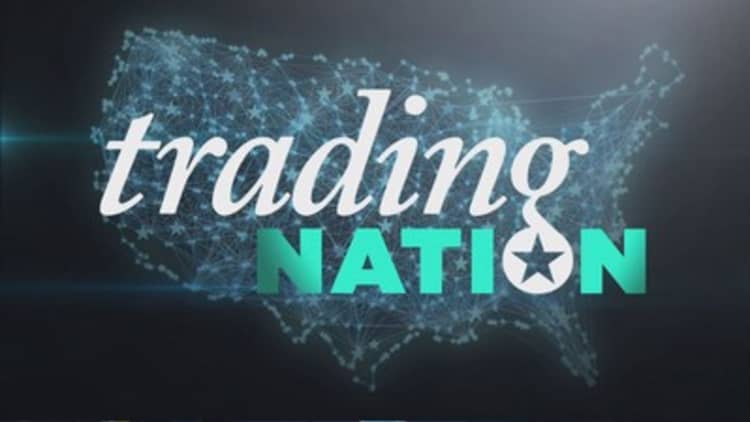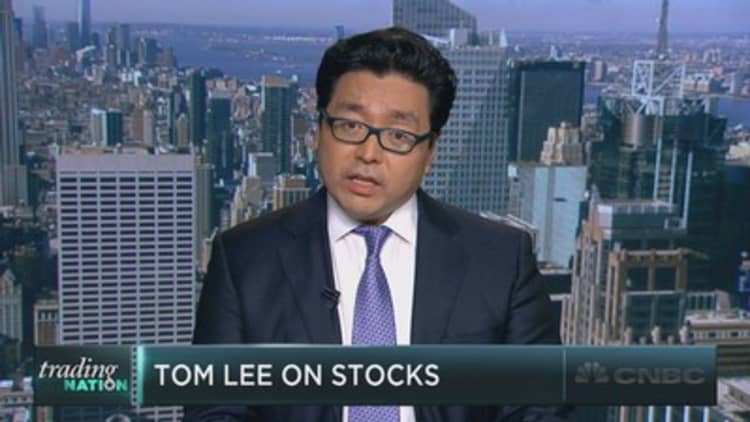


Among the biggest questions for financial markets this year has been when the Fed would finally move away from stimulative, ultralow interest rate targets.
But what if those ultralow targets aren't actually stimulative at all? What if, instead, the Fed's current policies are actually contractionary?
That's the surprising case made by a recent paper from the San Francisco Federal Reserve.
"Monetary conditions remain relatively tight despite the near-zero federal funds rate, which in turn is keeping economic activity below potential and inflation below target," writes economist Vasco Curdia.
The insight centers around the concept of a natural rate of interest. This is the hypothetical interest rate at which money would be lent and borrowed in equilibrium, leading the economy to neither grow nor shrink. If actual interest rates are above this natural (or neutral) rate, then less money will be lent out than otherwise might be, leading economic growth to slow. Conversely, if actual interest rates are below this neutral rate, then economic expansion should result.
Seen in this context, we cannot determine whether Federal Reserve policy is expansionary simply by comparing the current federal funds rate target to historical norms. Instead, interest rate targets must be compared to that current neutral interest rate.
And according to Curdia, the neutral rate is currently below zero. Actually, he says it is currently at negative 2.1 percent, in contrast to a long-run level of 2.1 percent. If he's correct, the direct implication is that right now, even a federal funds rate target of 0 percent to 0.25 percent is high enough to slow down the economy rather than contribute to expansion.
Since it is impossible to measure the natural interest rate directly, the economist's insight is based on a macroeconomic model that considers the difference versus potential economic output and actual economic output (and is more fully explained in a separate paper). Interestingly, he defends his estimation from contrasting ones showing a higher natural rate by arguing that "my analysis is suited to find short-term fluctuations in the natural rate."
Evaluating the accuracy of Curdia's call is a bit of a fool's errand, and in any battle between economists' models, the primary casualty tends to be the reader's patience. But if nothing else, the paper is significant for its potential impact on the Fed's next move.
After all, Curdia's consequent policy prescription is straightforward; "The model projections for the natural rate are consistent with the federal funds rate only gradually returning to normal over the next few years," he writes.
And it is a prescription that the Fed may indeed heed, notwithstanding Chair Janet Yellen's stated expectation that the Fed will raise rates in this calendar year.
Neil Azous of Rareview Macro points out that Curdia has worked closely with Michael Woodford, "who is widely considered to be the strongest consultant to the Federal Reserve for quite some time, and he's sort of the backbone to modern monetary policy." Further, the San Francisco Fed is "the academic arm of the entire system, and Janet Yellen came from the San Francisco Fed, so it's given additional credence."
When the paper is placed alongside recent dovish commentary from Fed Govs. Daniel Tarullo and Lael Brainard, "we have to acknowledge that the medium-term drivers of policy are shifting," Azous wrote Wednesday. Indeed, the market no longer believes that a rate hike is the base-case scenario this year, placing the chance of a move by December at just 33 percent, according to CME Group's Fed Watch tool.
Read More Internal split at Fed adds to confusion in markets
The bottom line, according to Oppenheimer head of portfolio strategy Andrew Burkly, is that stocks needn't worry about a looming Fed shock.
The dovish commentary is "probably a good sign for the market, and it'll keep things going here through Q4," Burkly said in a Wednesday "Trading Nation" segment.






